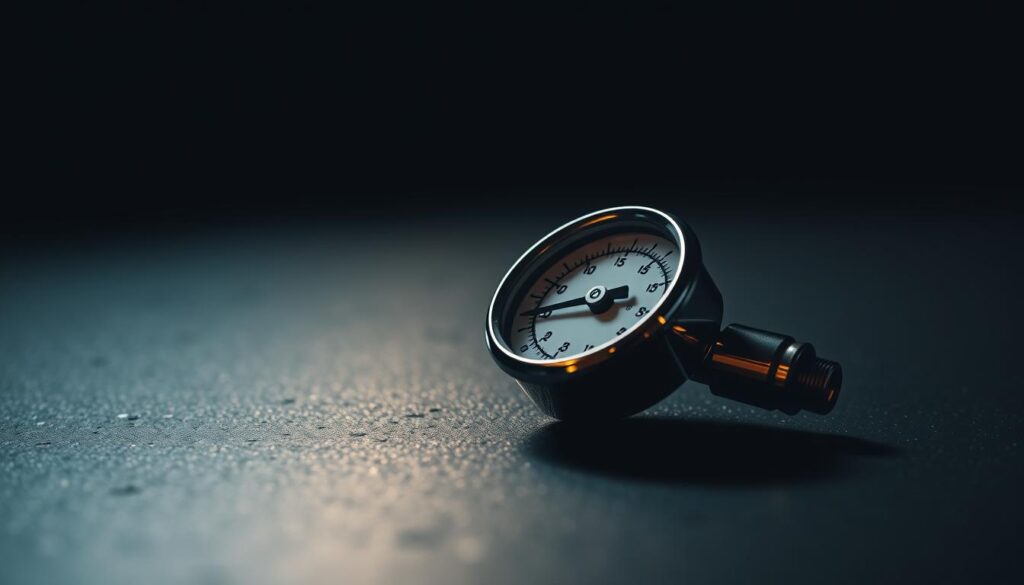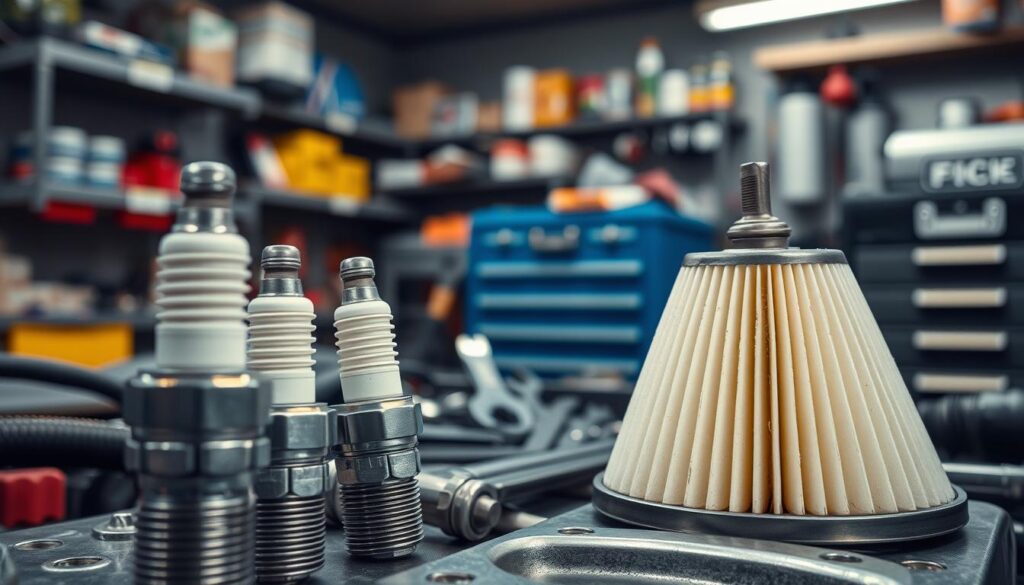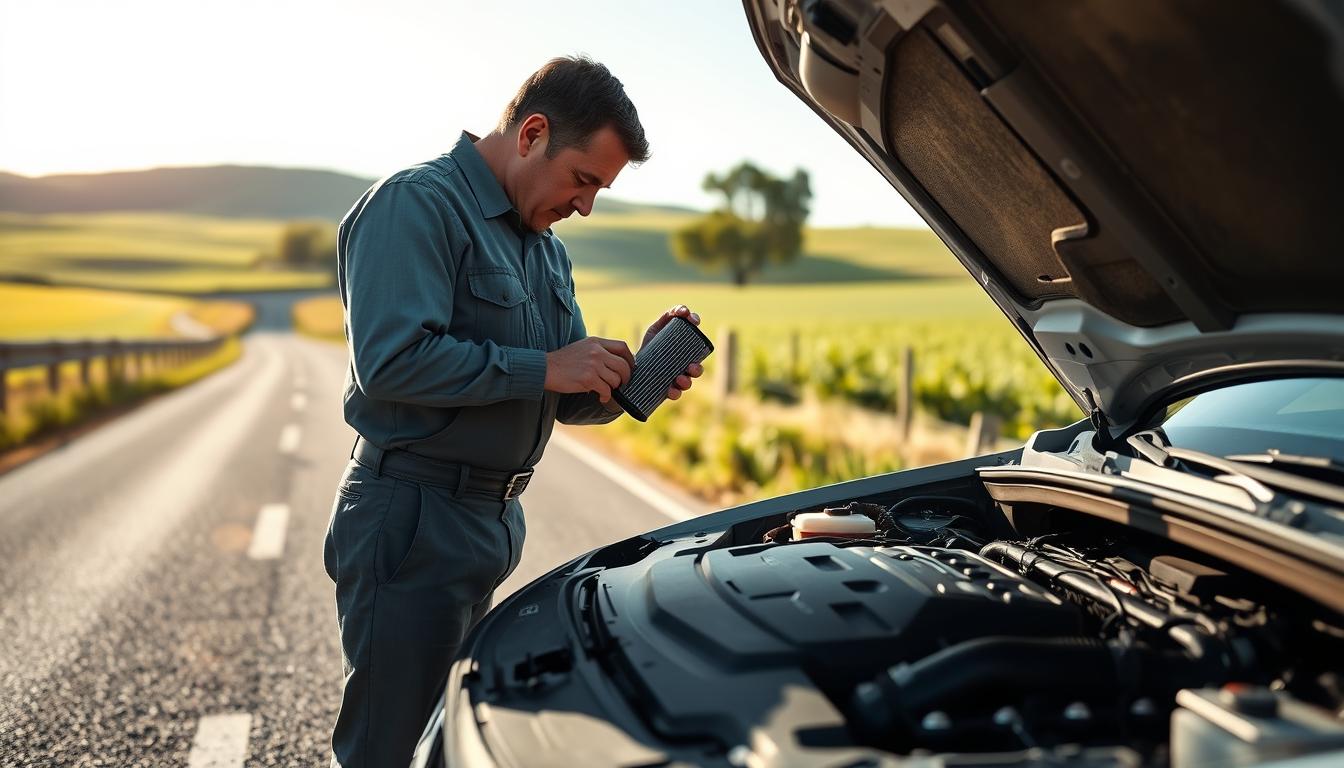How to Improve Your Car’s Gas Mileage
Did you know the average American household spends nearly $5,000 a year on fuel? That’s a significant chunk of any budget. With prices at the pump constantly fluctuating, getting the most from every gallon is more important than ever.
Boosting your vehicle’s efficiency isn’t just about saving money. It’s also a powerful way to reduce your environmental footprint. Many drivers don’t realize that simple adjustments to their habits and regular maintenance can lead to major savings.
This guide will show you practical, effective ways to enhance your vehicle’s performance. You’ll learn about smart driving techniques and easy maintenance tasks. These strategies work for any vehicle, from a small compact to a large truck.
Our goal is to provide a complete roadmap for maximizing fuel economy. You can start saving money and driving smarter with just a few changes.
Key Takeaways
- Simple changes to driving habits can significantly increase fuel economy.
- Regular vehicle maintenance is crucial for optimal efficiency.
- Better gas mileage saves money and helps the environment.
- These strategies are effective for all types of vehicles.
- Small, consistent actions lead to substantial long-term savings.
- Understanding factors that affect fuel consumption is the first step.
Understanding Car Gas Mileage and Its Influencing Factors

The distance you can travel on a gallon of fuel is determined by several mechanical factors. Each component affects how efficiently your engine converts gasoline into motion and power.
Impact of Tire Pressure and Rolling Resistance
Proper tire inflation is one of the most overlooked factors affecting fuel consumption. When tires are underinflated, rolling resistance increases dramatically.
Rolling resistance is the energy required for your tires to move along the road surface. Higher resistance forces your engine to work harder, burning more fuel to maintain speed.
Modern technology makes it easy to monitor tire pressure. Many apps and gadgets sync with your vehicle and alert you when to add air. This helps maintain optimal resistance levels.
The Role of Engine Efficiency and Air Filters
Clean air filters are essential for proper engine breathing and peak performance. A clogged filter restricts airflow to the engine.
This contamination affects the air-fuel mixture. The engine must compensate by using more fuel to generate the same power output.
Replacing your air filter within recommended intervals can boost fuel efficiency by up to 15 percent. This makes it one of the most cost-effective maintenance steps available.
Both tire pressure monitoring and air filter maintenance are simple, inexpensive ways to enhance vehicle performance. They should be part of every driver’s regular care routine.
Practical Ways to “Improve Your Car’s Gas Mileage”

Ready to put some real-world strategies into action for better fuel economy? This section is your practical toolkit for immediate results.
Choosing the Right Fuel for Your Vehicle
Start with what goes in your tank. The best fuel type depends entirely on your specific model. Check the owner’s manual or the sticker on the fuel-filler door.
If it says premium is “recommended,” you can usually use regular gasoline. If it states premium is “required,” always use the correct octane to maintain engine efficiency.
Here’s a clever tip: try refueling early in the morning. Fuel is denser when temperatures are cooler. This means you get more molecules per gallon compared to a warm afternoon.
Drivers who fill up twice a week could save around ten dollars monthly. Small changes truly add up over time.
Maintaining Correct Tire Pressure
This is one of the easiest and most effective methods to boost your gas mileage. Properly inflated tires prevent energy waste from increased rolling resistance.
Make checking pressure a regular habit, ideally once a month. This simple task takes just minutes but delivers significant fuel savings.
Underinflated tires waste fuel, wear out faster, and compromise safety. It’s a win-win-win for your wallet, your vehicle, and your well-being.
Find the recommended pressure on the driver’s door jamb sticker. Invest in a reliable gauge for accurate checks.
Driving Habits for Enhanced Fuel Efficiency

Beyond mechanical maintenance, the way you operate your vehicle plays a crucial role in determining how far each gallon takes you. Your daily driving routine can either maximize fuel efficiency or waste precious resources.
Benefits of Steady Speed and Cruise Control
Maintaining consistent speeds is one of the most effective ways to save fuel. Constant acceleration and deceleration force your engine to work harder. This burns significantly more fuel than smooth, steady driving.
Cruise control becomes your best friend on the highway. This tool helps maintain a constant speed without natural speed variations. It reduces unnecessary braking and acceleration that waste fuel.
Cruise control also prevents matching the pace of surrounding traffic. This common habit often leads to driving faster than necessary. Speeds above 60 mph dramatically increase fuel consumption.
| Driving Behavior | Fuel Impact | Efficiency Rating | Recommendation |
|---|---|---|---|
| Steady Highway Speeds | Optimal fuel use | Excellent | Use cruise control at 55-65 mph |
| Frequent Braking | High waste | Poor | Anticipate traffic flow |
| Rapid Acceleration | Very high consumption | Very poor | Smooth, gradual starts |
| Excessive Idling | Zero mileage gain | Worst | Turn off engine if stopped >1 minute |
Minimizing Idling and Avoiding Rapid Acceleration
Idling consumes half a gallon to a full gallon of fuel every hour. That’s ten to twenty ounces every ten minutes with no travel benefit. Modern vehicles are designed for efficient restarting.
If you’ll be stopped for more than a minute, turn off your engine. Restarting uses less fuel than prolonged idling. This simple habit can save a lot of fuel over time.
Avoid rapid acceleration, sometimes called “jackrabbit starts.” This demands a lot of power from your engine quickly. Smooth, gradual acceleration uses far less fuel and reduces vehicle strain.
Adopt a mindful driving style that prioritizes smooth transitions. Anticipate traffic patterns to maintain steady speeds. These habits significantly boost your vehicle’s fuel efficiency.
Smart Maintenance Strategies for Better Fuel Economy

Many drivers overlook two simple components that dramatically impact fuel consumption. Regular, proactive maintenance represents one of the smartest investments for enhanced fuel economy and long-term vehicle health.
Regular Replacement of Spark Plugs
Spark plugs serve as a critical but often ignored component in engine performance. Over time, these plugs can become fouled or damaged, leading to incomplete combustion.
This condition forces your engine to run less efficiently, burning more fuel than necessary. Replacing worn spark plugs provides an immediate, noticeable difference in performance.
The task should be completed according to your vehicle’s recommended service schedule. This small investment delivers significant returns in enhanced fuel economy.
The Importance of Air Filter Maintenance
Clean air filters allow your engine to breathe properly for optimal combustion. A clogged filter restricts airflow, forcing the engine to work harder.
Checking your air filter is straightforward – simply pop the hood and inspect the filter housing. If it appears dirty or clogged with debris, replacement time has arrived.
Regular replacement every 12,000-15,000 miles helps your engine run cleaner and more efficiently. These maintenance tasks rank among the most cost-effective ways to boost fuel economy.
Establishing a consistent maintenance schedule that includes these components not only improves efficiency but also extends engine life. Preventive care prevents costly repairs while maximizing every gallon of fuel.
Lifestyle Adjustments to Reduce Fuel Consumption

Your daily vehicle usage choices can dramatically impact how often you visit the pump. Beyond maintenance and driving habits, simple awareness of how you use your transportation makes a real difference.
Reducing Extra Weight and Aerodynamic Drag
Every extra pound in your vehicle requires more energy to move. Remove unnecessary items from your trunk and cabin regularly. Sports equipment and roof racks create additional drag when not in use.
Aerodynamic drag is the resistance your vehicle faces when moving through air. At highway speeds, this becomes a major factor. External accessories disrupt smooth airflow and increase fuel consumption significantly.
Efficient Use of Windows, Air Conditioning, and Sunshades
The choice between open windows and air conditioning depends on your speed. Below 40 mph, fresh air is more efficient. Above 60 mph, air conditioning causes less drag than open windows.
Remember the 60 mph rule for optimal fuel economy. Parking in shade or using sunshades keeps your cabin cooler. This reduces the initial workload for your climate control system when you start driving.
These simple adjustments require minimal effort but deliver substantial results over time. Combined with other strategies, they help maximize every gallon of fuel.
Conclusion
What if you could save both money and time while driving the same routes you travel every day? Achieving better fuel efficiency comes from combining simple maintenance with smart habits.
Regular care like checking tire pressure and replacing air filters makes an immediate impact. Your driving style matters too—steady speed and using cruise control fight resistance effectively.
Don’t forget strategic choices like removing roof racks to reduce drag. The smartest move? Plan your trips. Keep an errand list and use GPS to minimize driving distance.
This approach saves fuel, money, and your most valuable resource: time. Start with one or two changes and track your results. Better gas mileage is within reach through awareness and consistency.
FAQ
How does tire pressure affect my fuel economy?
Can my driving habits really make a difference in fuel consumption?
What’s better for fuel efficiency: using the air conditioning or driving with the windows down?
How often should I replace my air filter to help with gas mileage?
Does using cruise control actually save fuel?
What simple maintenance task has the biggest impact on fuel economy?

Sharon Molly is a content creator in lifestyle, fashion, and travel, delivering style-savvy advice and destination insights to inspire confident living. With a background in digital media, she combines aesthetics with practical guidance for modern women on the go.




